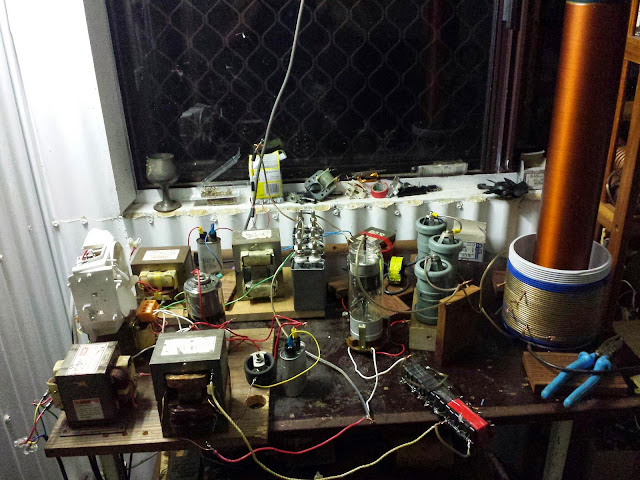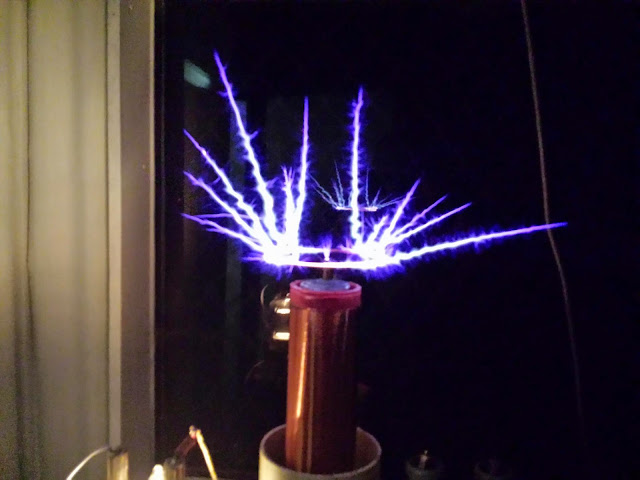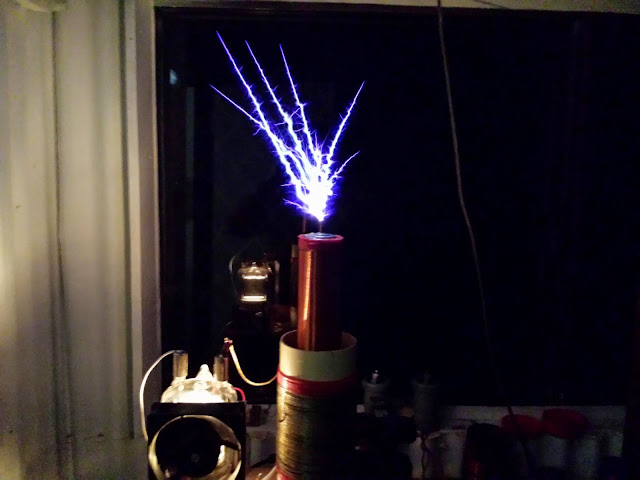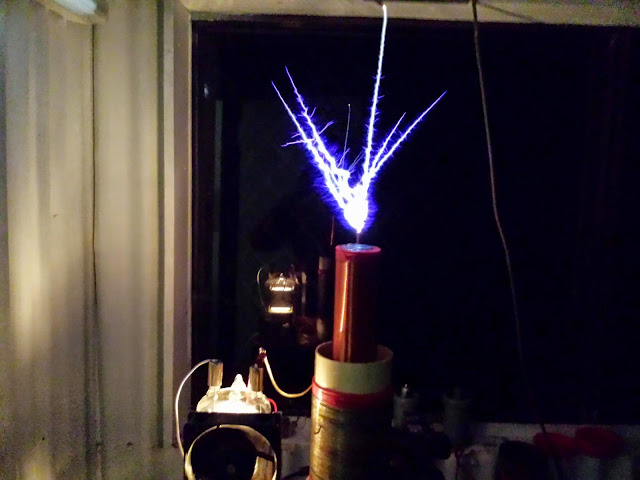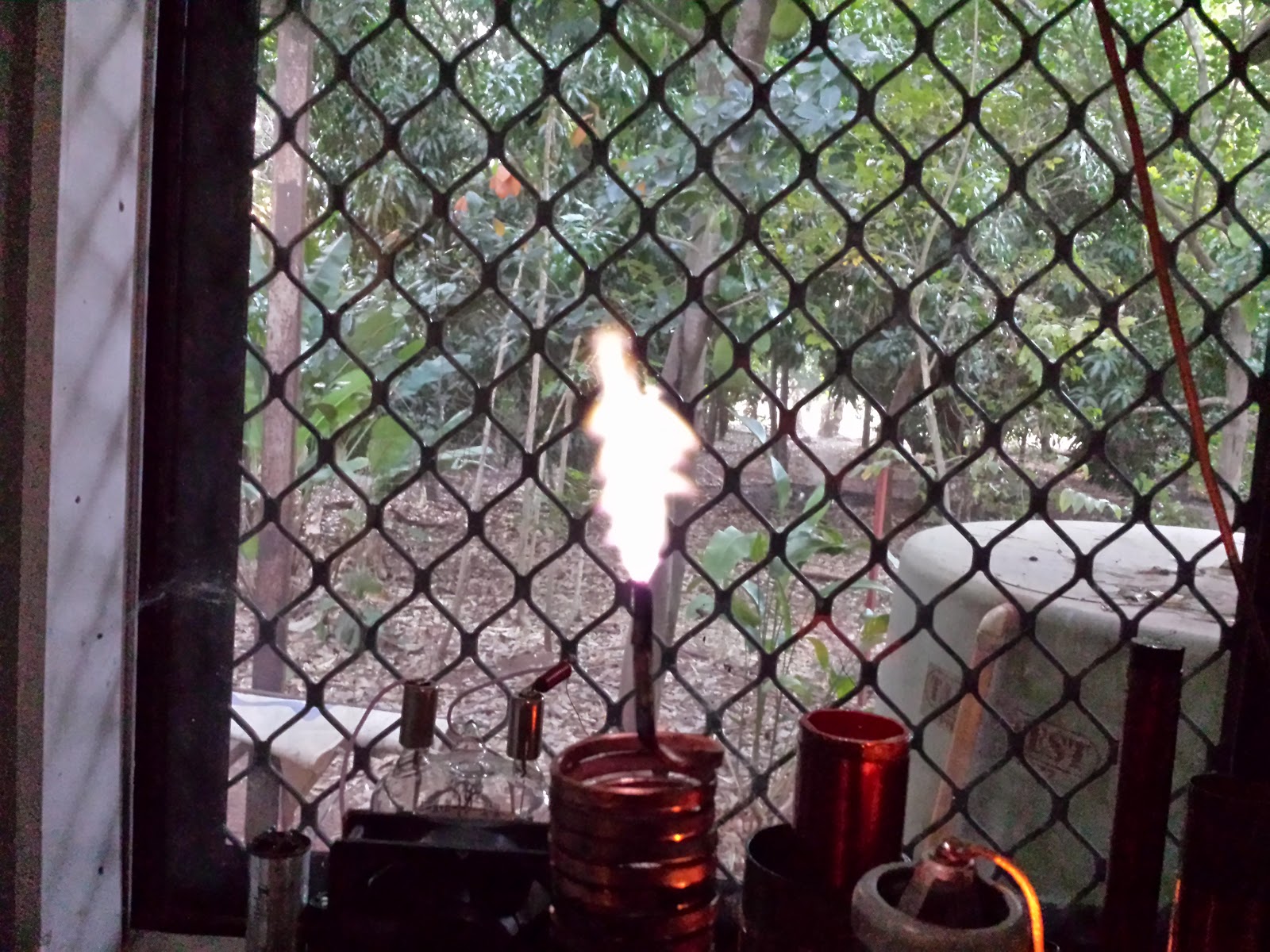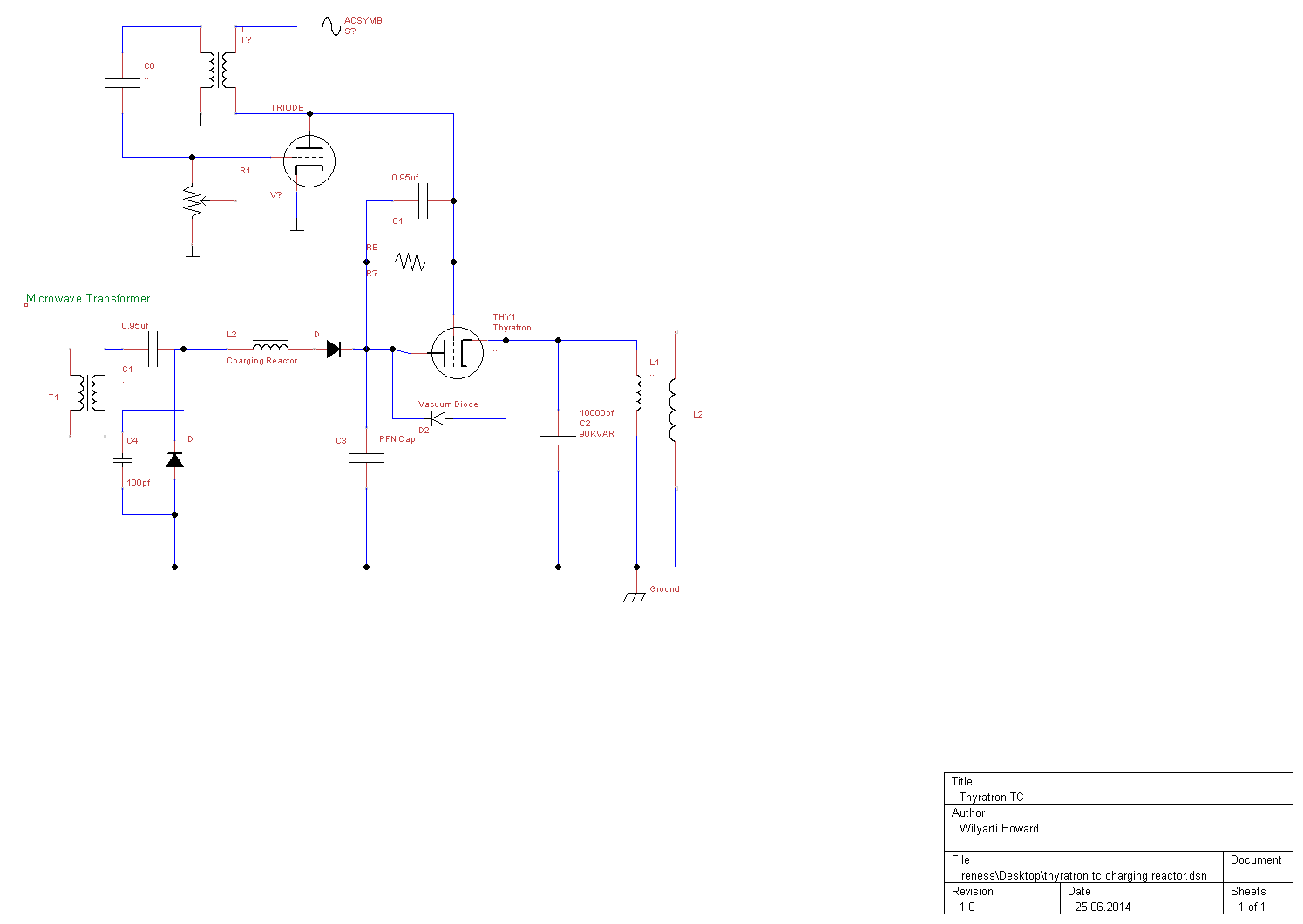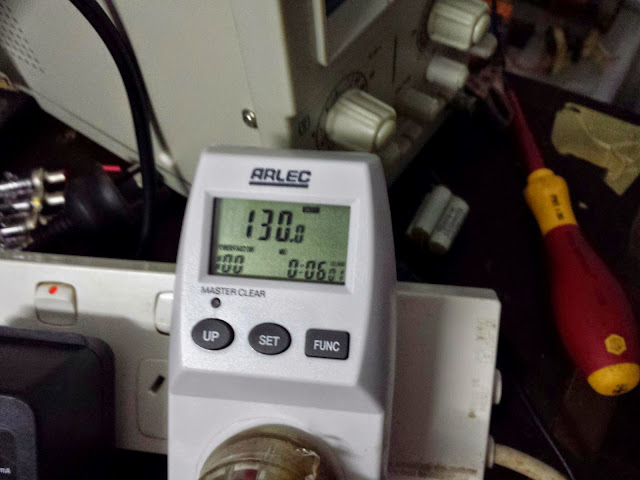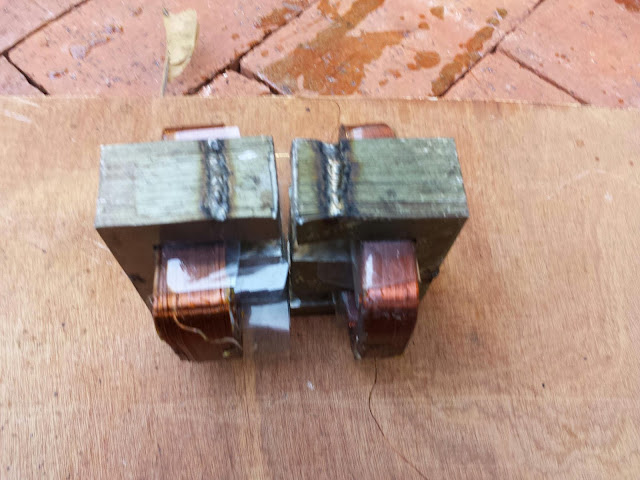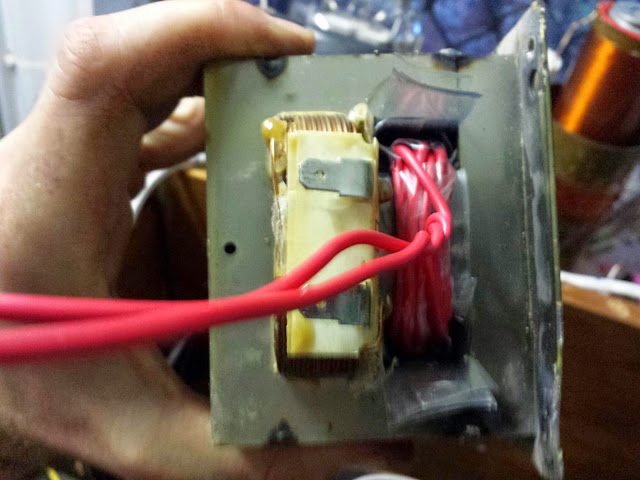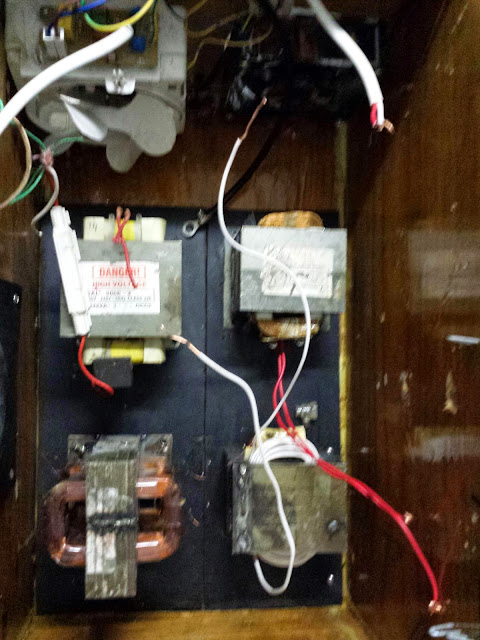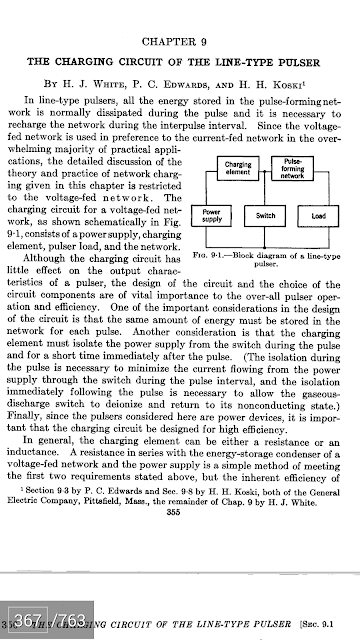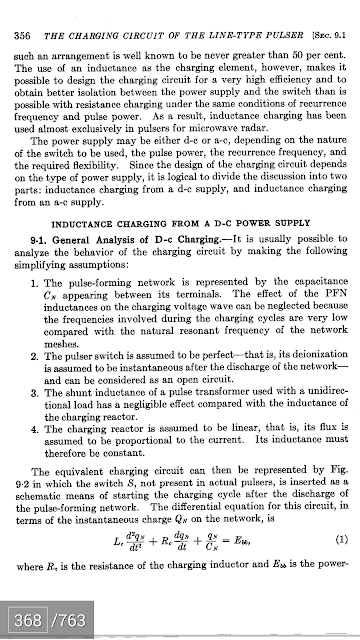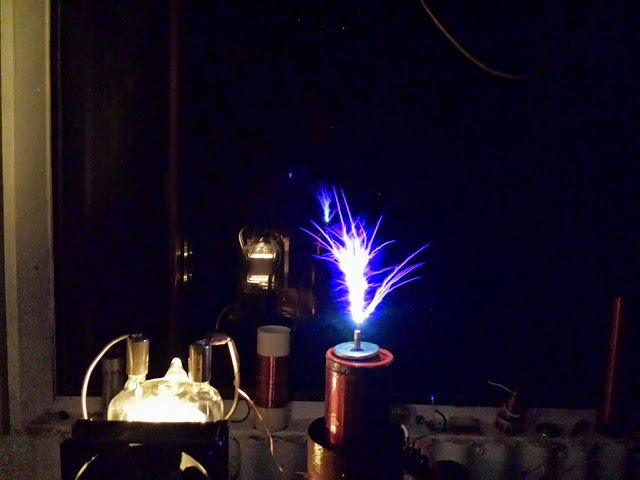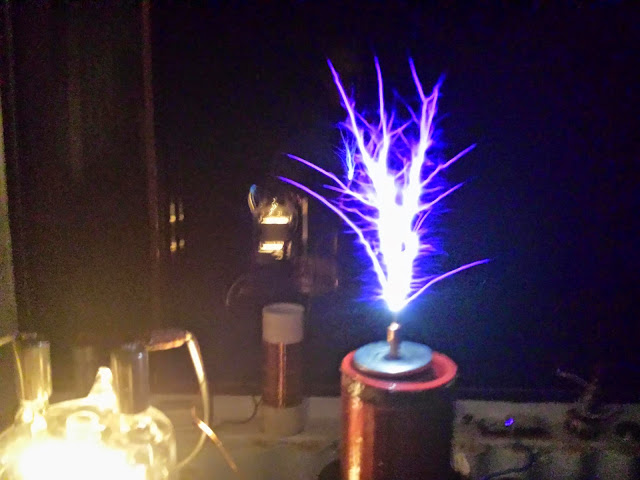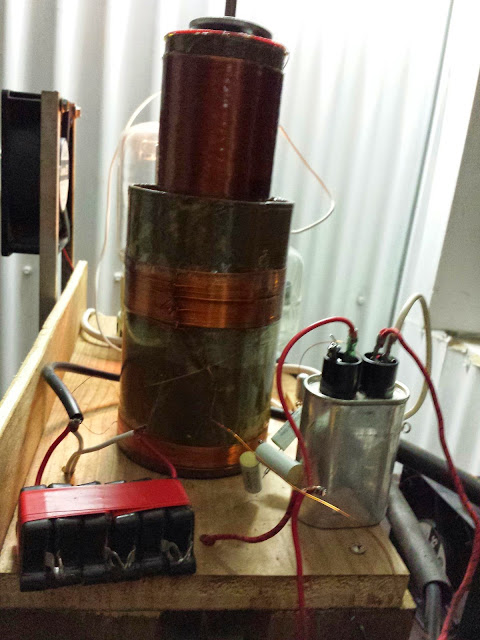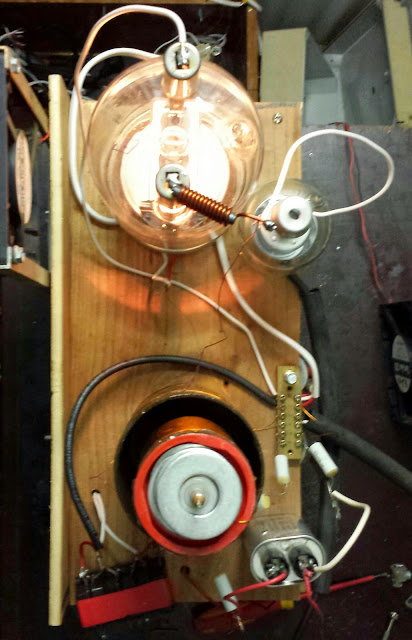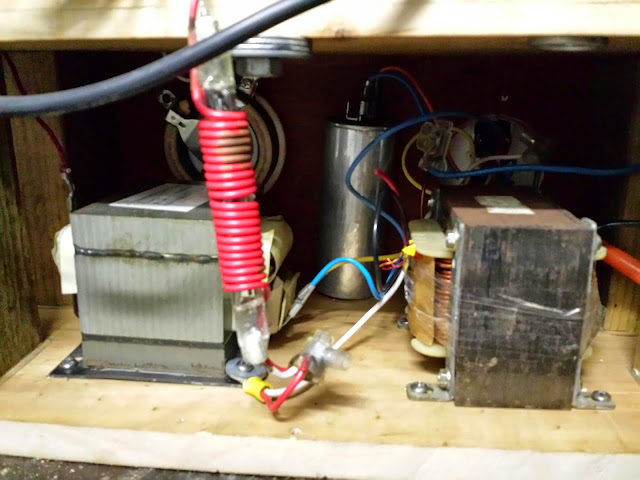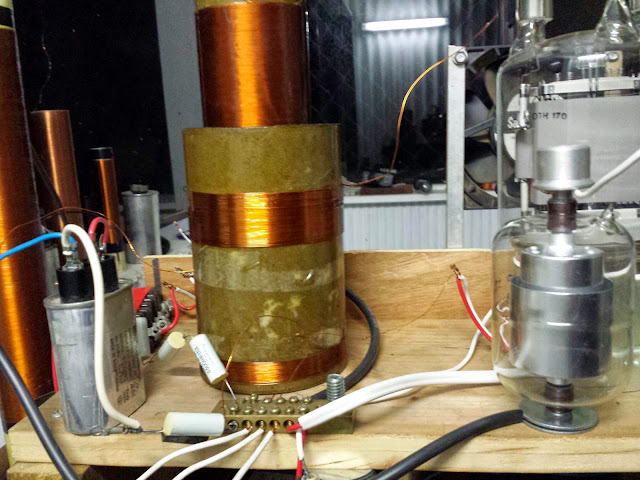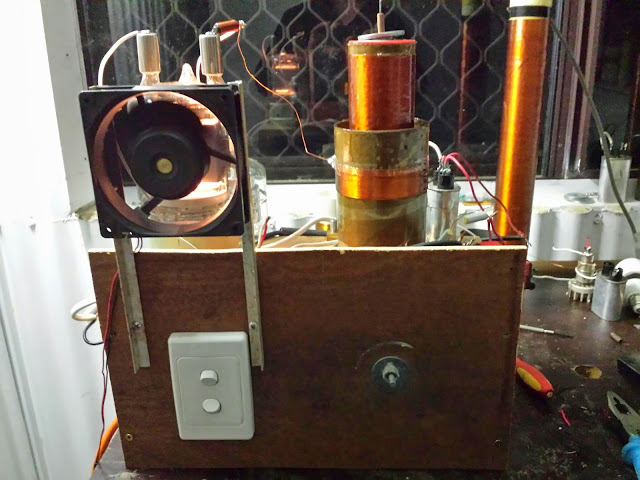Thyratron Tesla Coil Mk 2: http://youtu.be/Oj4p1HHqzk8
Got it going again with new pulse caps.
But then my thyratron driver got cooked. The grid to cathode leads were internally arcing.
So I have to do two things:
1.) Include reverse voltage bypass over thyratron
2.) Build a microsecond grid bypass circuit to negatively bias grid
I give up for now. This thing is getting way too complicated and expensive.
So if you replicate my experiment you will need a 30kv+ isolated pulse transformer for driving the grid and a grid bias circuit with a nanosecond recovery.
You will also need a nanosecond high voltage reverse protection for the thyratron rated at several hundred watts.
I think all of these things will help.
Either that or a thyratron rated at 25kv plus that only supplies 8kv. Even though the input voltage is 8kv the voltage in the tank rises to 50kv+. I get this number based on the 7mm arcs I was getting from the primary to ground.
The pulse repetition frequency needed is between 500 to 1500 pps.
Good luck!
